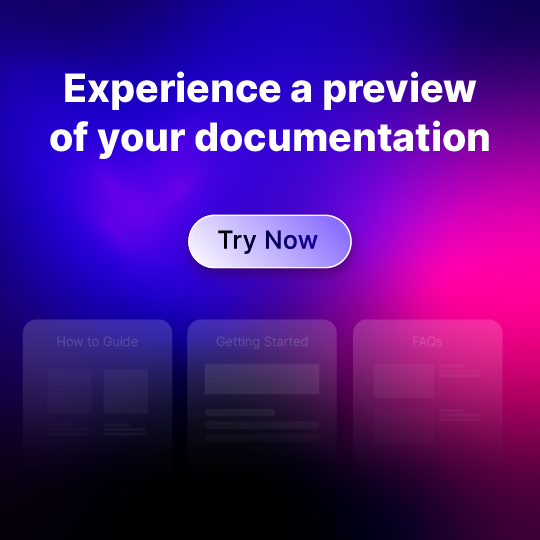What’s the best of all problems for a SaaS business to have? We’d say it’s when there are too many customers. However, while a politician would be foolish to complain of having too many votes, it does mean that you have many more people whose needs must be met.
At the beginning of your company’s journey, you’ll probably be deeply immersed in helping all of your customers personally. You’re excitedly learning about product-market fit (since 42% of SaaS businesses fail due to a lack of it) and how customers are benefiting most from your software. You have a personal connection with every one of your customers, so it’s easy to work as a team.
As your company grows, human customers can morph into little more than a number – while you frantically scramble to help them all in a decent time frame. We start focusing on metrics like First Contact Resolution, which make sense for business but can make customers feel rushed. Eventually, they feel alienated from the company. 14% of SaaS businesses have failed because they didn’t adequately attend to their customers’ needs.
Paradoxically, a self-service in SaaS is the key to scaling your SaaS business successfully. It will enable you to keep on helping the customers who need it most, while making more efficient use of your resources. “To me, success means creating a business that empowers customers, employees, and community in equal measure. We want to add positive value to people’s lives, from a personal and professional standpoint,” says Dan Kurzius, co-founder of MailChimp.
Why Do You Need Self-Service in SaaS?
It’s very easy to focus on the acquisition of new customers at the cost of all else, and yet at some point customer retention should become your strongest focus. “Customer relationships matter more than ever, because your future revenue depends on those relationships lasting well beyond a single transaction,” says Mikkel Svane, co-founder of Zendesk.
The more customers we retain, the more important self-service becomes to serve them. You can take one approach to this dilemma by hiring more support agents. But is this approach sustainable, or, indeed, desirable?
The primary benefit of a SaaS self-service customer knowledge base is for ticket deflection, so you need fewer agents to help the same number of customers. Simply put, you will receive fewer customer queries if the majority of simple problems can be solved with a dedicated article.
As any customer support pro will tell you, you typically receive a mind-numbing number of queries – all of which represent only a handful of topics. 37–57% of agents spend the majority of their time on mundane, repetitive tasks. That’s the main reason why we have saved replies! But a support rep should not become a glorified robot, just copying and pasting replies to your customers. We have chatbots for that sort of thing.
No. Your support reps should be empowered to prioritise the most complex cases, while ensuring that all customers feel heard and taken care of.
Investing in a self-service knowledge base is a much more viable solution than the alternatives for customer self-service. Outsourcing your support cheaply means the quality of service will likely suffer. Instead, you must empower your experienced and talented support people to do more with the time they have.
Read the full case study here.
Another benefit of a self-service online knowledge base is that help content can be fed into a chatbot, improving its ability to solve customer problems with automation. Again, this saves even more time.
Schedule a demo with one of our experts to create a self-service knowledge base with Document360!
Book a Demo
The Pitfalls to Avoid With Self-Service
Self-service in SaaS is the gold standard, but don’t miss out on that vital feedback loop with your customers. It’s a risk when more customers are solving their own problems, and you have fewer interactions with them. Remember to encourage feedback on your knowledge base articles, so you can continue to identify when there are actual problems with the software. These are things that should be solved in the next release – rather than just deflected with a workaround.
A self-service online knowledge base is not a way to keep customers from contacting you. In fact, keep your contact details in full view in both your knowledge base and your app, so customers can quickly pick up the phone or fire off an email if they need to.When recommending help articles to your customers, avoid coming across like you’re dismissing their plea for help. Ideally, solve the problem they have come to you with, and also point them to the relevant knowledge base article.
Next time, they will probably remember to check this resource first.
A knowledge base is about giving customers what they want – which is a simple way to solve a problem without contacting a human. Self-service only works if your content actually helps, so you’ll need to regularly review and audit your knowledge base.
How to Implement SaaS Self-Service with a Knowledge Base?
Who should create the content?
A self-service knowledge base is best created by someone who is actually in the trenches working with your customers every day. You can create a hybrid role such as Head of Product and Documentation for someone who is an experienced customer support representative. This is a good way to offer support reps new opportunities for career development.
Where do I find content ideas?
Through talking to your customers, you will learn which are the most common queries that could be answered with a help article. Many saved replies can quickly be turned into functioning knowledge base articles. In this way, you can automate away the problem-solving for many typical issues.
How should I write the content?
Ideally, any task or procedure that can be broken down into steps makes a good troubleshooting article. Create some Getting Started guides to improve customer onboarding and the chance they will find value in your product. Make sure to use the language of your customers, check your writing for simplicity using tools like Hemingway, and mainly stick to Active Voice.
Where should I host the content?
Invest in the right knowledge base software, like Document360, which allows you to create a stylish and customized knowledge base within minutes. You can control permissions for authors and customers, and even have more than one knowledge base for different products or versions. Shifting From Reactive to Proactive Customer Service.
Tap to see how Document360 can help you self-serve your SaaS customers
An intuitive self service knowledge base to self serve your customers. Give Document360 a try!
Get Started for free
Moving from one-to-one support to a SaaS self-service model requires a radical shift in mindset. That means going from reactive to proactive.
“Businesses can’t afford to react to what their customers want; they need to anticipate their needs,” says Parker Harris, co-founder of Salesforce. It’s completely natural to respond to situations as they arise. As your operations mature, you need to adapt your strategy to break the cycle of customer pain.
A reactive mindset is normal when your company is just starting out. You’re beginning to understand your customers, and waiting for them to tell you what they think of your product. But as time goes on, you can begin to consciously keep track of common trends, with the ultimate goal of making the customer support process more efficient and customer-centric.
It’s a continuous back and forth with customers where you take the lead on customer success. If a customer gets the impression you’ve dealt with this problem many times before, they might begin to wonder why you haven’t solved it. They might question the ultimate value of a product that seems to have stagnated.
Proactive customer service shows you are actively engaged in improving the product and customer experience. And this can also help with damage control when mistakes happen, which they inevitably will. Your customers will be used to you proactively supporting them, and more forgiving when they have a negative experience with your product.
Check out how Document360 simplified onboarding new customers for VIEW:
Final Remarks
Scaling your SaaS business with a self-service knowledge base is definitely about playing the long game. The goal is to gradually train your customers to become enthusiastic knowledge base users, all the while keeping the main channels of support open for anyone who needs (or prefers) a human.
You won’t be able to make self-service work without dedicated and knowledgeable support staff. Show them you deeply value their role in proactively helping customers to get the most out of the product. If nothing else, they will appreciate the opportunity to prevent problems before they happen, as opposed to firefighting all the time.
Never lose your obsession with the customer. Do change your strategy in how you can best help them. Self-service success won’t happen overnight, but it will be a more sustainable approach to take as your company grows and thrives.






 –
– 

